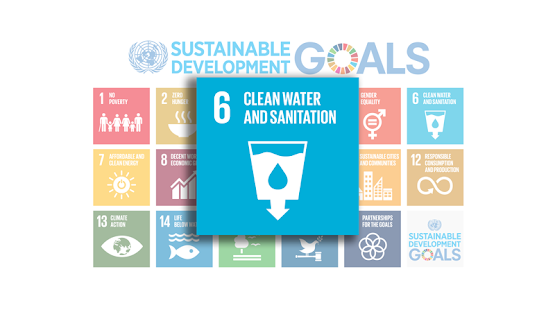What comes to mind when you think of water and sanitation in Sub-Saharan Africa?
Perhaps, this prompt conjures up more questions than answers: what does 'sanitation' actually mean? Or, how could I commit such a generalisation? Sub-Saharan Africa is made up of forty-six countries, all with their own geographies, cultures, climates, etc!
Firstly, what is sanitation? The World Health Organisation (WHO) defines sanitation as: 'access to, and use of, facilities and services for the safe disposal of human faeces and urine'. This 'safe disposal' refers to the 'separation of human excreta from human contact at all steps of the sanitation service chain'. Examples of safe sanitation systems include, flush toilets, and pit latrines with a slab. Whilst this definition provides a strong starting point from which we can consider sanitation, McFarlane et al's (2014) paper on 'everyday sanitation', leads me to find this definition to be exclusionary, and deceivingly straightforward.
Sanitation is not homogenous - rather, it is a process, that varies spatially and temporally, and is 'profoundly differentiated by relations such as gender, age, ethnicity, region income and ability' (McFarlane et al, 2014). Therefore, this blog adopts a more inclusive understanding of sanitation - which recognises the gendered differences of human waste, and thus includes menstruation and its by-products.
Now, you may be thinking: what's the link between sanitation, water and development? Well, you wouldn't be alone, in fact,
'sanitation is both one of the most important, and one of the most neglected areas of human development' (McFarlane et al, 2014).
Sanitation was previously a 'silent crisis' - the importance of sanitation is now crystallised through its recognition as a human right, and within Sustainable Development Goal (SDG) 6, which calls for the 'availability and sustainable management of water and sanitation for all'. This SDG recognises the risks to public health posed by inadequate access to, and management of sanitation systems - which exposes communities to harmful pathogens found in human waste via the contamination of water resources -, and recognises sanitation as 'deeply embedded within the objective of the social system of sustainable development' (Bayu et al., 2020).
So, why I have chosen to explore the sanitation issue in the context of Sub-Saharan Africa (SSA)?
 | |
|
However, these figures conceal the complexity of the sanitation issue; as shown in Figure 1, access to sanitation varies greatly within individual countries. This is due to the distinct and complex relations between; systems of governance; 'software' (socio-economic, cultural) dimensions; and 'hardware' (physical facilities) - which are both cause, and solution of the sanitation issue, within country-specific contexts (Jewitt, 2011), which I will explore over the next few weeks.
Although, in recognition of the vastness and diversity of sanitation in SSA, I will focus on urban areas, due to the diverse, and pressing sanitation issues caused by rapid urbanisation which has outpaced infrastructure development. With this trend only expected to continue, as the urban population expected to increase x4, to 1.3 billion by 2050, it is critical that we understand the sources of sanitation issues, and explore potential solutions.
However, my emphasis, and conceptualisation of sanitation as an 'issue' in SSA thus far is perhaps flawed, and risks contributing to the vast amount of literature which is quick to compare, and subsequently disparage 'Africa' in relation to Western ideals of 'development' (Nilsson, 2017). I assure you this is not my intention! Rather, through this blog I also hope to highlight the sanitation innovation occurring throughout the region.
Ultimately, the purpose of this blog is not to '[pity, worship or dominate]' SAA, but rather, to decentralise the sanitation conversation from its dominating Eurocentric paradigm through a de-colonial approach, to explore the contemporary quality of colonial structures in sanitation, and explore the ways in which countries of SSA can achieve equitable, and sustainable access to safe sanitation and lead the global sanitation revolution.

Great use of questions to get the reader to think more about water and sanitation. I would encourage you to write in the active voice as I think it would really help you to bring out your argument more.
ReplyDeleteGreat synthesis of peer reviewed material. As your focus in on Africa, can you relate some of the more general material (such as the SGDs and video) to the African context? You don't need to know all the answers here, but suggesting how it may be the same or different may help you to set up the scope for what you may cover in subsequent posts.
(GEOG0036 PGTA)